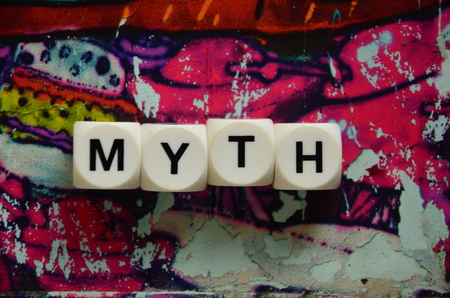Introduction: Colonial Encounters in the Realm of Dreams
Within the ancient hush of night, dreams have always woven their quiet magic through the tapestry of human experience. Across continents and centuries, people have looked to their dreams as sources of guidance, prophecy, healing, or even warnings from the spirit world. In Britain, dreams once shimmered with Celtic mysticism, medieval superstition, and Christian symbolism—each belief system layering meaning upon meaning. Yet, it was during the era of British colonial expansion that this realm of nocturnal wisdom encountered a profound shift. The empire’s reach was not merely political or economic; it extended into the most intimate spaces of imagination and belief. As British colonisers traversed oceans and set foot on foreign soil, they carried with them their own dream narratives—and met those of others, often so different and yet eerily resonant. This collision and fusion did not occur in silence; rather, it sparked conversations between cultures about what dreams truly signify. Through policies, missionary teachings, and cultural exchange (both gentle and forceful), colonialism catalysed a transformation in how dream beliefs were shared, challenged, suppressed, or reimagined. To explore these shifting sands is to understand how dreams themselves became battlegrounds for identity, resistance, adaptation, and new forms of spiritual communion—woven together under the indelible shadow of empire.
2. Pre-Colonial Dream Beliefs in Britain and the Colonised Lands
Before the far-reaching shadow of British colonialism touched distant shores, both Britain and the lands it would come to rule were already rich with intricate dream traditions. To understand the transformation brought by colonial contact, we must first attune our senses to the indigenous dream beliefs and practices that flourished independently. These native interpretations were not only windows into the unseen realms but also foundational to cultural identity and spiritual life.
Indigenous Dream Traditions in Pre-Colonial Britain
Long before the Union Jack fluttered across continents, the British Isles were home to Celtic, Anglo-Saxon, and Norse communities, each weaving their own tapestry of dream lore. Dreams in ancient Britain were considered omens, messages from ancestors or nature spirits, and even guidance for tribal leaders. The Druids—mystics of old—were renowned for interpreting visions as sacred dialogues with the Otherworld. Among common folk, dreams foretold harvest fortunes or impending danger, often guiding day-to-day decisions.
Table 1: Key Features of Pre-Colonial British Dream Beliefs
| Community | Source of Dreams | Purpose/Meaning | Cultural Role |
|---|---|---|---|
| Celtic Britons | Ancestral Spirits/Nature Deities | Prophecy, Guidance, Healing | Druid Rituals, Community Decisions |
| Anglo-Saxons | Gods/Supernatural Forces | Warnings, Fate Revelation | Folklore, Personal Direction |
| Norse Settlers | Gods/Spirits of the Land | Omen Interpretation, Battle Outcomes | Saga Storytelling, Warrior Culture |
Dream Interpretations in Colonised Lands Prior to British Rule
The colonies themselves—ranging from West Africa and India to the Caribbean and Australasia—boasted diverse dream traditions steeped in ancient wisdom. In West African societies, dreams were often seen as nightly journeys where souls communicated with ancestors or received healing instructions. Among Indigenous Australians, the Dreamtime was not merely a state of sleep but an eternal realm shaping all reality; dreams connected individuals to creation stories and land stewardship. Meanwhile, Indian traditions included elaborate systems like yoga nidra and oneiromancy detailed in Vedic texts.
Table 2: Selected Indigenous Dream Beliefs in Colonised Territories
| Region/Culture | Main Dream Sources/Interpretation Systems | Cultural Significance |
|---|---|---|
| West Africa (Yoruba/Akan) | Ancestral Communication/Divination Practices (Ifá) | Moral Guidance, Spiritual Protection |
| India (Vedic/Tribal) | Sacred Texts (Upanishads)/Astrological Systems | Karmic Insight, Destiny Mapping |
| Caribbean (Taino/Maroon) | Nature Spirits/Herbalist Traditions | Healing Wisdom, Resistance Strategies |
| Indigenous Australia (Aboriginal Nations) | Dreamtime Stories/Ancestral Songlines | Cultural Law, Land Connection, Creation Lore |
A Tapestry Yet Unwoven by Colonial Threads
The varied dream beliefs across pre-colonial Britain and its future colonies reflected a world alive with spirit and story. Each tradition moved intuitively between waking and dreaming realities—guiding communities through uncertainty and change long before the encounter with empire. This landscape of dreams set the stage for profound exchanges—and sometimes collisions—once British colonialism began its inexorable expansion.

3. Channels of Exchange: Cross-cultural Encounters and Dream Symbolism
Within the fragrant corridors of colonial encounters, where the British Empire brushed shoulders with countless cultures, a subtle and often invisible dialogue unfolded—a sharing and transformation of dream beliefs. Let us imagine, for a moment, a village on the Indian subcontinent or an African coastal town, where British administrators, missionaries, and traders engaged daily with local spiritual guides, shamans, and wise elders. In these liminal spaces between dusk and dawn, dream symbolism became a universal language—sometimes whispered in reverence, sometimes debated with scepticism.
The English fascination with dreams had its own roots: from the prophetic visions of Celtic folklore to Shakespeare’s mystic soliloquies. Yet when these beliefs met the intricate dream interpretations of colonised societies—each rich with ancestral wisdom—a tapestry of shared meaning began to emerge. Colonial officials sometimes adopted indigenous symbols into their nightly reflections; conversely, local dreamers adapted Christian or Victorian motifs into their own nocturnal narratives. This was not merely mimicry but a creative fusion—one that shaped new hybrid understandings of fate, omens, and the spirit world.
Institutional channels also played their part. Mission schools taught biblical interpretations of dreams, often challenging or seeking to overwrite traditional beliefs. However, these efforts were rarely one-sided. Local healers and storytellers would reinterpret foreign teachings through their own mythic frameworks. In church halls and tribal gatherings alike, stories of angels and ancestors mingled under candlelight—a silent negotiation about what it meant to receive messages from beyond.
This exchange was not always harmonious. There were moments of resistance, where sacred symbols clashed—British scepticism confronting indigenous certainty; colonial dogma meeting mystical intuition. Yet through these tensions emerged a richer spiritual vocabulary. The meanings ascribed to snakes, rivers, or falling teeth in dreams shifted subtly as people navigated this cross-cultural terrain.
In essence, the channels of exchange during British colonialism were as much about relationships as they were about ideas. Whether through whispered confidences beneath banyan trees or heated debates in colonial courts, dream lore travelled—transformed by the hopes and fears of those who dared to dream across boundaries. Thus began an intuitive journey through the ever-evolving tapestry of spiritual knowledge—a testament to human curiosity and resilience amid the tides of history.
4. Transformation and Assimilation: Hybridisation of Dream Worldviews
The British colonial era was not only a political and economic upheaval but also an intricate dance of cultural exchange, resistance, and transformation—especially in the realm of dream beliefs. Under the shadow of empire, indigenous dream-centric spiritual practices encountered the rationalist, often Christian-infused perspectives of their colonisers. This encounter did not simply erase local traditions; instead, it created new hybrid forms, blending the mystical with the modern, the ancestral with the foreign.
British authorities frequently viewed native dream rituals with suspicion, branding them as superstition or even paganism. Yet, beneath this surface-level repression, there was a subtler process at play—a weaving together of worldviews. For example, while missionaries might discourage traditional dream interpretation ceremonies, they sometimes incorporated aspects of these rituals into Christian prayer meetings, re-framing dreams as potential messages from the Christian God rather than ancestral spirits.
Emergence of Hybrid Practices
This fusion manifested in a spectrum of beliefs and rituals. In many colonised societies, people began to interpret dreams using both indigenous symbols and Christian motifs. The language of dreams shifted; what was once seen as a conversation with ancestors might now be described as divine guidance or warning from saints. Meanwhile, British settlers themselves were not immune to local influences—some adopted local talismans or consulted indigenous dream interpreters, especially when facing unfamiliar landscapes or unexplained phenomena.
| Pre-Colonial Dream Practice | Colonial Influence | Hybridised Outcome |
|---|---|---|
| Ancestor-based dream interpretation ceremonies | Christian missionary teachings on visions and prophecy | Dreams interpreted as communications from both ancestors and Christian figures |
| Use of herbal concoctions for dream enhancement | Introduction of Western medical skepticism and regulation | Selective retention; some herbs banned, others integrated into folk remedies with new meanings |
| Community storytelling sessions sharing dream journeys | Victorian emphasis on private reflection and written diaries | Rise of personal dream journals blending oral tradition with British literary forms |
Cultural Resilience and Innovation
The transformation was neither complete assimilation nor total erasure. Many communities displayed remarkable resilience by encoding forbidden dream rituals within permitted religious or cultural activities. New syncretic festivals emerged where dreams played central roles but were justified through colonial-approved narratives. Over generations, these hybrid beliefs became embedded in local identities—living proof that spiritual intuition adapts under pressure without losing its luminous core.
The Ongoing Legacy of Hybrid Dream Beliefs
Today’s multicultural Britain still bears traces of these colonial-era exchanges. From Caribbean churches holding “dream testimony” services to South Asian families consulting both priests and psychologists about troubling visions, the dreamworld remains a meeting place—ever evolving—where ancestral whispers intermingle with contemporary voices. In this sense, the impact of British colonialism is not frozen in history but continues to shape how dreams are understood, honoured, and transformed across generations.
5. Lingering Echoes: Modern British Dream Culture and Post-Colonial Reflections
The ripples of British colonialism continue to flow quietly beneath the surface of modern British dream culture, subtly shaping the landscape of how dreams are spoken about, interpreted, and revered. While the Empire’s physical dominion has long faded, its spiritual and psychological imprints linger within British narratives, language, and everyday rituals—threads connecting present-day Britain to distant lands once ruled under its banner.
The Hybrid Language of Dreams
British English today is peppered with dream idioms and metaphors that owe their existence to centuries-old encounters. Words like “nightmare” have medieval roots, yet the richness of contemporary dream vocabulary reflects a mingling of indigenous British traditions and far-flung colonial influences. From Indian “maya” (illusion) to Caribbean folktales about dream spirits, these borrowed expressions have become woven into the collective British psyche—sometimes so seamlessly that their origins are all but forgotten.
Storytelling as Spiritual Exchange
Sit in a London café or gather around a family table, and you may still hear stories of prophetic dreams or visitations from ancestors—echoes of beliefs imported from Africa, Asia, and the Caribbean during centuries of imperial entanglement. British storytelling has absorbed these motifs, turning them into familiar tropes in novels, television dramas, and even public discourse about intuition and inspiration. The result is a narrative landscape where ancient Celtic omens mingle with tales of Eastern dream guides—a testament to the ongoing alchemy between cultures.
Spiritual Practices: Old Roots, New Growth
Modern Britons seeking spiritual meaning frequently turn to practices rooted in post-colonial exchange: lucid dreaming circles inspired by Native American traditions, tea ceremonies infused with mindfulness from India and China, or guided meditations evoking African ancestral wisdom. These practices are not mere appropriations; rather, they often serve as bridges for deeper healing—a way for individuals to reconnect with lost heritage or find common ground in an increasingly multicultural society. The act of dream interpretation itself becomes both a personal journey and a subtle act of cultural remembrance.
Thus, the enduring legacy of colonial dream exchange manifests not only in language but also in the very fabric of British identity—a gentle reminder that dreams are never just private reveries. They are living archives, repositories of longing and learning passed down through generations. As contemporary Britain continues to reckon with its imperial past, its people shape new visions for the future—one dream at a time.
6. Conclusion: Remembering and Reimagining Dream Pathways
The legacy of British colonialism lingers in the quiet spaces between waking and sleeping, where dreams carry whispers of both disruption and renewal. As we reflect on the exchange and transformation of dream beliefs across cultures, it becomes clear that colonial encounters did not simply erase or overwrite existing traditions—they entangled them, sometimes painfully, sometimes with unexpected grace.
In the British Isles, ancient Celtic dream lore once danced freely with the mists; after colonial expansion, these traditions found themselves mingling with distant cosmologies from Africa, India, the Caribbean, and beyond. The result is a tapestry woven from loss and resilience, where suppressed voices sometimes echo louder in dreams than in waking life. British colonialism brought about not just the imposition of Western rationality, but also subtle exchanges: local seers whispered their visions to missionaries; sailors carried stories of prophetic dreams home from distant ports; hybrid rituals took root in unlikely places—pubs, chapels, parlours—beneath the veneer of Empire.
Today, we are invited to honour both the shadows and illuminations left by these tangled histories. To walk the dream pathways shaped by colonial legacies is to acknowledge wounds as well as wonders—to recognise how some beliefs were silenced while others were transformed into tools for survival, resistance, or connection. In contemporary Britain, multicultural communities continue to share and adapt dream practices: Somali tea houses swap ancestral interpretations; South Asian families blend Jungian analysis with Sufi poetry; young Britons explore lucid dreaming with mindfulness borrowed from many shores.
Let us remember that every dream carries an inheritance—a faint trace of someone else’s hope or fear crossing borders long ago. And let us reimagine what dreaming together might mean in a Britain still reckoning with its past. In reclaiming our shared night-worlds, we can choose to listen deeply: to seek wisdom in diversity rather than division, to honour the sacredness of vulnerability and vision that has survived centuries of change.
As dusk falls over familiar hedgerows or distant city towers, may we find courage to journey through the inner landscapes inherited from both ancestors and strangers alike. In doing so, we do not merely remember—we become co-creators of new meanings for generations yet to dream.


